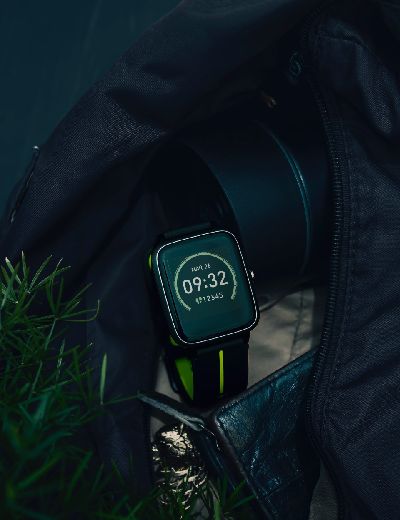If you're an ecommerce business owner, it's easy to get bogged down in the day-to-day tasks of running a business---and forget about what's most important: making money. If you're not making money, then why are you doing this? The good news is that there are plenty of ways for ecommerce businesses to increase profits without spending much time or money on them. In fact, with just 30 minutes per day and these simple tweaks below, your ecommerce business could see a 10 percent increase in revenue and profit each month!
Clean up your email list
One of the most important things you can do to increase your profits is clean up your email list. Email marketing is one of the best ways to reach customers on their phones and computers, but it only works if you have a clean and up-to-date list.
You need to make sure that everyone who has ever bought from you or signed up for your newsletter is still receiving those emails. If they've unsubscribed or moved over to Gmail, they might not be getting them anymore -- which means that every time someone clicks through from Google Ads or Facebook Ads, it's costing money without giving any return on investment.
It also makes sense not just for financial reasons but also for customer service reasons: when people don't see what they're interested in when they open an email, they think something must've gone wrong with their subscription -- so then they'll go back into their inboxes and see all those other newsletters asking them if everything's okay!
Connect with influencers in your niche
One of the easiest ways to get more sales from your ecommerce business is by connecting with influencers in your niche.
Influencers are people who have a strong following on social media and who may be willing to promote your products if you offer them something in return (i.e., free samples or discounts). They can help you grow an audience and increase brand awareness, so they're vital to keep in mind when building relationships with potential customers.
Here are some tips for connecting with influencers:
- Find Influencers Who Are In Your Niche
The first step is identifying which influencers are relevant for your industry and audience. You can find these people on social media such as Twitter & Instagram, but also consider other platforms like Pinterest & Medium where women tend to hang out online too! The best way I've found is through Google searches using keywords like "top bloggers". Take note of which ones seem most popular within the past month or two so that they're still relevant enough for your needs (and don't forget about upcoming events like trade shows if necessary). If all else fails there's always LinkedIn where many professionals go after leaving their jobs :)
Compare your products to competitors' products on Amazon, Etsy, etc.
Step 1:
The first step is to get your hands on some competitor data. You can find this data in a variety of ways, such as:
-
Using a tool like Jungle Scout to compare your products to competitors' products (and then import the data into a spreadsheet)
-
Using Excel to compare your products to competitors' products
Create a 30-second video of your product in action and post it to Facebook.
The easiest way to sell your product on Facebook is to create a 30-second video of your product in action and post it to your business page. In this video, make sure you're talking about the benefits of your product and showing how it works. You can use any editing program (e.g., Camtasia) to add text over the video so that viewers know what they're getting into before they click the link.
Create a Facebook ad that promotes your blog posts, not your products.
- Create a Facebook ad that promotes your blog posts, not your products.
In this section, you'll learn how to create a Facebook Ad that promotes your blog posts instead of products. It's easy! And if you want to get even more out of this strategy and use it as an opportunity to increase traffic and conversions on your site, read on for the 'advanced' section below!
- Use the Facebook Pixel: If you are new to Facebook Ads or just need help getting started with them, check out our free guide here [link]. The first step is setting up the Pixel so that we can track which users come from our ads. This will make all future steps easier (and more accurate).
Do the math on the cost of goods you sell.
Your business is like a car: you need to keep it running smoothly and efficiently. The first step in doing that is understanding how your business works and where the money goes.
Let's look at an example of how to calculate your profit margins by looking at your sales data, then plugging it into a spreadsheet program:
First, let's say your products cost $1 each (this happens more often than you'd think). If you sell 100 units, then that means COGS = $100 ($1/unit x 100 units). Let's also assume that for each unit sold, you make about $0.50 profit (this number will vary based on the industry). So Gross Profit = $50 ($100 -- $50). Finally, Net Profit = Gross Profit -- Operating Costs (costs to run the store such as rent or web hosting fees) = -$22 (-$50 -- (-$28)).
If this seems confusing because numbers aren't your strong suit...don't worry! We've got some help coming up soon with tools and resources designed specifically for people who are bad with numbers but want help staying profitable nonetheless :)
Change the call to action on your website.
If you want more sales and profits, you need to make it easy for your customers to take the next step.
This is where a call-to-action comes in. It's a button or link that prompts your site visitors to buy something from you -- like an eBook, subscription service or physical product.
There are several things you can do with a call-to-action:
-
Make it clear what you want visitors to do on your website by using language such as "Buy now" or "Subscribe now" instead of simply "Subscribe now!" This way, there's no confusion about what action they should be taking on your site.
-
Make sure that if someone clicks the button/link, they don't get lost somewhere else on the page -- this defeats the purpose of having one! So make sure there's only one CTA per page (and if possible only one per section).
With just a few small changes, you can increase profits for your online business.
One of the most important things you can do to increase profits for your ecommerce business is to understand what's happening with your product. You'll want to compare your products' profit margins, traffic, and conversion rates with those of similar products.
By doing so, you'll be able to fine-tune the price points of your products based on industry averages and other factors. You'll also be able to determine which types of people are interested in buying the product and which ones aren't---and then adjust accordingly.
For example: If one type of person is more likely than another type of person to buy a particular product at a certain price point, then it makes sense for you (or whoever manages pricing)
to raise or lower prices as needed depending on market dynamics--which is something that shouldn't happen automatically just because there's enough stock sitting around somewhere!
Conclusion
I hope this article has helped you to think about how to make your ecommerce business more profitable. If you're planning on making these changes, then I want to encourage you to do so! The Internet is a huge marketplace and there are thousands of people just like yourself who are trying hard every day to improve their businesses. You don't need special skills or knowledge; all it takes is some hard work and the willingness to try something new.



